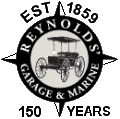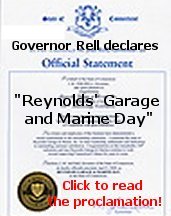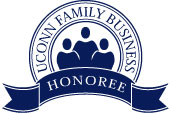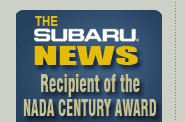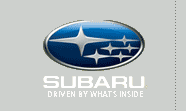| |
History
The History of Reynolds' Garage and Marine
This is a story of a family-run dealership whose roots in customer
service was established in 1859. It is the story of six generations in
a family-run business that has grown and changed with the times,
literally from buggy whips to bass boats. It is the continuing story of
Reynolds' Garage & Marine Inc. by Kathryn Reynolds Wayland as
dictated by Leland Harding Reynolds.
Nestled on Hamburg Cove off the Connecticut River in Lyme, Conn.,
Reynolds' Garage & Marine has been in business since 1859, when
Ephraim Otis Reynolds started serving the carriage-riding public.
In those early days, he built two- and four-seat carriages
with canopy tops, and open conveyances. Each wheel spoke was painted
and striped appropriately; each carriage received a hand rubbed coat of
varnish, leather upholstered seats and cushion and a black patent
leather dashboard. The blacksmith shop, located below the carriage
shop, made all the iron rims for the carriages. In addition to
servicing and building the carriages, Ephraim also operated a general
store that included a grain room, hardware, kerosene tanks and many
other necessary items. But progress in manufacturing was about to set
our business on a path that was the first of many changes. Wagon
production ended in about 1890 since Studebaker was able to build the
carriages in an assembly line production and Ephraim could no longer
compete. Ever the entrepreneur, Reynolds saw opportunity and entered
the repair business.
Then in 1909, Ephraim sold the shop to his son Hayden. Grandson
Harold ran the general store, but only briefly, as he died in 1924.
Ephraim and his wife had three daughters and four sons, but only Hayden
became involved with the business. Hayden recalled that he worked for
his father from dawn to dusk for just 50˘ a day.
Hayden then changed the name of the store to the H.L. Reynolds
Co. (Hayden Lord Reynolds), and continued to repair carriages until
1917 when he sold the carriage shop to a new owner who physically moved
the building down the road on skids. Hayden and his wife had four sons
and two daughters by this time.
When carriages began to lose out to the more efficient
automobile, about 1915, one of Hayden's sons, Donald Grant (or D.G. as
he was called), made the transition to repairing automobiles. Hayden
was still running the general store and the blacksmith shop, but
allowed Donald to set up a workshop in a three-car garage on the
property. Thus Reynolds began servicing automobiles, mostly Studebakers
and Model T Fords. He was equipped to repair all facets of the Model
T-Ford.
The boat business first came into operation in the form of a
35' scow powered by a 10hp single-cylinder engine Donald would use to
ferry supplies for the general store.
Donald was in fact quite an entrepreneur. When he drove the delivery
truck for Hayden's general store, he also went into the glove-making
business. He purchased a set of dies and a bolt of cloth to cut pieces
for cotton gloves in the evening. He delivered the gloves to women on
the delivery route to sew them for him and then sold them at the
general store. It was during this time that Donald married Kathryn
Harding and they had four children together - Leland, Doris, Carol and
Donna, Leland was interested and involved with the automobiles from his
youth.
Reynolds' Garage, circa 1924 Donald's business began to grow and
about 1924 he built a new building, a stone building still used today
for service. Tragically in 1924, the small three-car garage caught
fire, and Donald burnt his hands badly trying to rescue a 32-volt
electric light plant destined for the new building, as electricity did
not reach there until about 1926. The garage burnt to the ground, but
fortunately the roof was almost finished on the new building so
business continued. He only had about $600 worth of insurance so Donald
received virtually no insurance for the lost equipment and therefore
never replaced all the tools for the Model T Ford repairs.
A generator was used in the new building to charge a group of batteries
to run lights, a 32-volt electric drill and a valve resurfacer. They
did not immediately sign up for electricity when it came to town; they
installed a switch on the generator to run both 32volt and 110volt
tools. This required the technician to carefully lay out his tools and
his job so the switch would only have to be pulled once. All the other
equipment, including the air compressor, was run from overhead shafting
and flat belts powered by a Star automobile engine.
The new garage was constructed from stone that was originally part
of a new church in nearby Lyme. Plans for a Gothic-style church began
in 1865 and construction started in 1873, until financial problems
caused the donor to withdraw the funds. The financial problems were due
to the Civil War since the gentleman who funded the project went
bankrupt. Donald purchased the stone in 1915 to build the new garage.
The new garage was constructed between 1923 and 1924 while Donald was
selling Star and Durant automobiles. Durant worked for General Motors
and then went to work for himself. Mr.Durant made Flynt, Star and
Durant automobiles. Star was a very cheap car, put together in assembly
line fashion, very tinny, but they sold very well. He also sold Model T
Fords through a dealership in New London. From 1922-66, the dealership
sold Studebakers and from 1925-32, Chevrolets. In 1933 when Studebaker
went bankrupt, Donald kept the business going with service work alone.
People still had to get around and no one could afford a new car. His
company slogan at that time was, "Big enough to serve you - Small
enough to know you."
The docks and dredging for the marina took place in 1932, but the
land remained soft from the fill for years. The first hauling engine
for the marina was purchased from a junkyard in the 1930s for about
$100 and is still used today. The engine was a 1908 Bridgeport
automatic with an Atwater-Kent open circuit ignition system. In 1936,
the first building was erected in the marina. Donald ran the marina
with the auto service until it was rented to his daughter Doris'
husband, Charles Jewett. Marina buildings were constructed during
1936-49.
The marina hauled and stored boats and repaired them. Leland's
brother-in-law, Charles Jewett, ran the marina from the early 1940s
until the 1950s when Leland purchased it. Jewett at the time could
accommodate about 30 small to medium boats for winter storage. When
Leland purchased the marina, he changed the name of the company to
Reynolds' Garage & Marine, formerly Don Reynolds Auto & Marine
Service and previously E.O. Reynolds Carriageworks.
Then in 1942, Leland purchased the business from Donald. Leland was
drafted for World War II, but due to no eyesight in his right eye,
(from tools used in his birth) he was not selected. When he was
approached the second time, the government decided it was essential to
keep him in the auto business.
In 1941, Leland purchased the old blacksmith shop which Hayden had made
into a cottage and remodeled it for his home. He married Laura Gallup
and they had two children, Gary and Carleen. Gary helped his father
from a very young age with the automobile business. In 1946, Leland
acquired the first direct agency, Studebaker, so that Reynolds' could
act independently. In the 1950s, Leland and Donald received a thirty
year appreciation award from Studebaker Corporation. Then in 1964,
Leland became a Land Rover dealer and that lasted until 1974, when Land
Rover went out of business. Fred Buttorworth, Reynolds' Land Rover rep
then went to work for Peugeot and later convinced Peugeot to offer
Leland that franchise. Leland and Gary sold Peugeot from 1969-1992.
Around 1977, Gary purchased the business from Leland. In 1991, Gary
acquired a Subaru franchise. Currently Reynolds' Garage & Marine
Inc. sells and services Subaru's. Reynolds' Garage also services
Peugeots and other makes of vehicles, and now sells and services Yamaha
Outboards, Cobia, Skeeter and G3 Boats. The boat lines are a recent
addition that are still in their infancy and were selected by Tom, who
is a very avid bass fisherman.
The dealership employs all three of Gary's children who are the sixth
generation, Leland Thomas (Tom), G. Hayden Jr., and Kathryn. It's been
quite a journey for the Reynolds family. Yet through good and bad
times, it's still in operation. Hard work, determination and customer
satisfaction are why Reynolds' has been around since 1859. This sixth
generation business was recently named the No. 1 Subaru dealer in the
country in customer satisfaction for both its sales and service
departments.
About the Author: Kathryn Reynolds Wayland is one of the
sixth-generation members currently running the family dealership. She
manages both Customer Service and Human resources. She has been working
at the family dealership now since 1998, but helped out through her
teenage years part-time. She received her bachelor of science from
Cornell University in landscape horticulture, but the family business
was growing so fast she went to work there after working for a short
time in horticulture. Her brother Tom handles most of the boat business
from selling to service, but bass fishing is his main love. Her twin
brother Hayden is sales manager for both marine and automobile sales.
|
|
